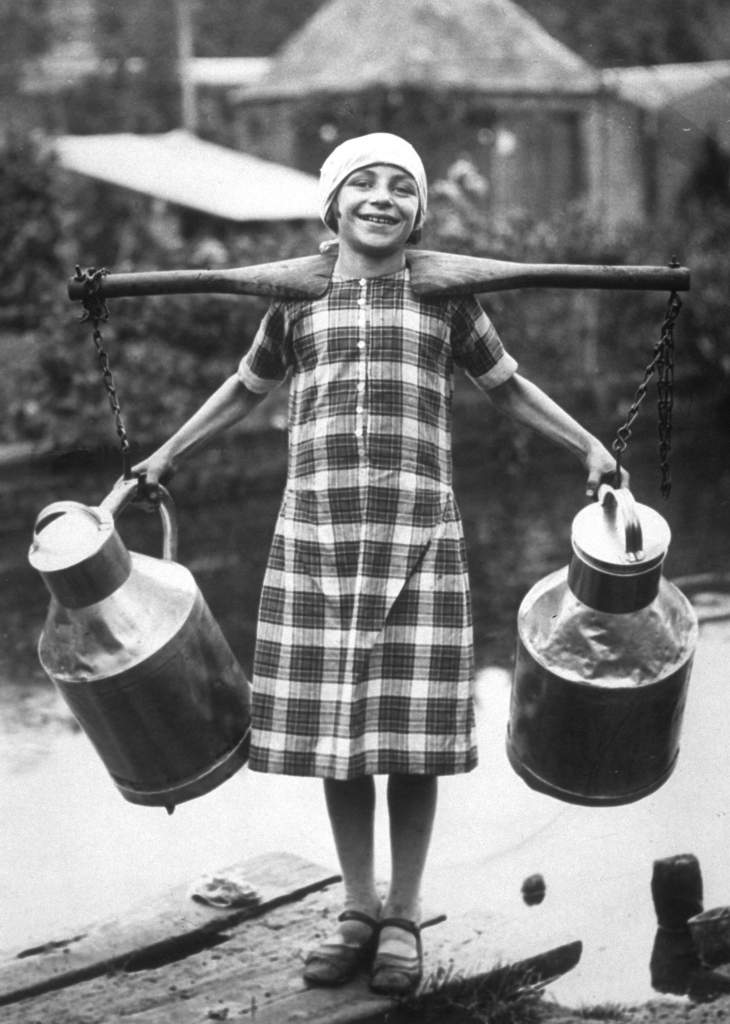
(Google)
Today’s Google Doodle celebrates Marie Harel, the inventor of the delicious Camembert Cheese. April 28, 2017 would have marked Harel’s 256th birthday.
Harel was born on April 28, 1761 in Crouttes, France. She died on November 9, 1844 in Vimoutiers.
Harel is credited with creating the first Camembert in 1791. According to legend, she had some help from a “cheese whisperer” in the form of a priest, who gave her the secret to making the soft-centered cheese known around the world, according to Google. The Doodle features multiple images of Harel in the process of making the cheese, inspired by French artists like Hervé Morvan and Raymond Savignac.
Here’s what you need to know about Harel and Camembert Cheese.
1. Camembert Is Made With Raw Cow’s Milk, But Doesn’t Use Cream
Camembert Cheese is similar to Brie, as both are made with raw cow’s milk. However, Camembert does not have cream in it. It’s yellow in color and has an ” earthy aroma, creamy taste, and an edible white rind,” Google notes.
According to The Kitchn, Brie comes from the Ile-de-France region, while Camembert is made in Normandy. Brie also has higher fat content because of the added cream.
There’s also a difference in how the two cheeses are sold. Brie is usually sold by the slice, while Camembert is sold as complete wheel. Camembert wheels are smaller than Brie wheels.
2. Harel Created Her Own Cheese After Altering a Recipe from Abbot Charles-Jean Bonvoust
According to Murray’s Cheese, Harel is credited with creating Camembert Cheese in 1791 after a Brie priest Abbot Charles-Jean Bonvoust visited her region while he fled the French Revolution. He passed along the recipe, but it was slightly altered by the time she made it.
Harel, who was 30 years old at the time, took out the cream from the Brie cheese, creating something new. She also famously packaged the cheese in wooden boxes.
However, there is no contemporary evidence of this story, which began appearing in the 1900s. According to the Oxford Companion of Cheese, there’s no evidence that Harel met any of the priests moving through the region during the 1790s. But there is evidence that Camembert Cheese predated Harel, but the legend has been accepted as fact over the years.
3. Harel’s Descendants Strongly Persisted in Keeping the Legend Alive
The Oxford Companion to Cheese notes that Harel’s descendants are the ones credited with keeping the legend alive, particularly, her grandson, Cyrille Paynel.
Another grandson, Victor Paynel, is credited with introducing the cheese to Napoleon III, which helped Camembert gain wider fame in France.
Researcher Pierre Boissard, who wrote Camembert: A National Myth, wrote that her family created a commercial cheesemaking empire and Payne promoted the legend to add “greater authenticity” to the brand. When the industry was revived in the 1920s, after World War I, they further promoted the legend.
Today, there are plenty of different companies making Camembert Cheese. There are even recipes online to help you make it at home.
4. There’s a Statue for Harel in Vimoutiers, France
There is a statue for Harel in Vimoutiers, France on the Rue de Chatelet.
According to Cemetieres de France et d’ailleurs, the Harel family tomb is located in Champosoult, since that’s believed to be the place of her death. However, her daughter, Marie, died there in 1855.

Marie Antoinette Harel, the grand-niece of Marie Harel, in 1935. (Photo by Fox Photos/Getty Images)
The statue in Vimoutiers was actually paid for by an American. According to Taste-Camembert, Joseph Knirim visited Normandy in 1926 and claimed the cheese cured his stomach-ache. So, he helped pay for the statue. During World War II, the statue was bombed and employees of Borden’s Cheese Company in Ohio donated to have it rebuilt.
Harel died on November 9, 1844.
5. Camembert Cheese Is One of the Most Popular in France Today & Was Given to French Troops in World War I
Today, Camembert Cheese remains popular in France. In 2010, Le Figaro reported that the French consumed 120,000 tonnes (120,000,000 kg) of the cheese in 2009. The only cheese the French ate more of in 2009 was Emmental cheese.
Accordign to Taste-Camembert, the cheese was also given to French soldiers during World War I in their rations, which could explain why the cheese experienced a resurgence in popularity after the war.

